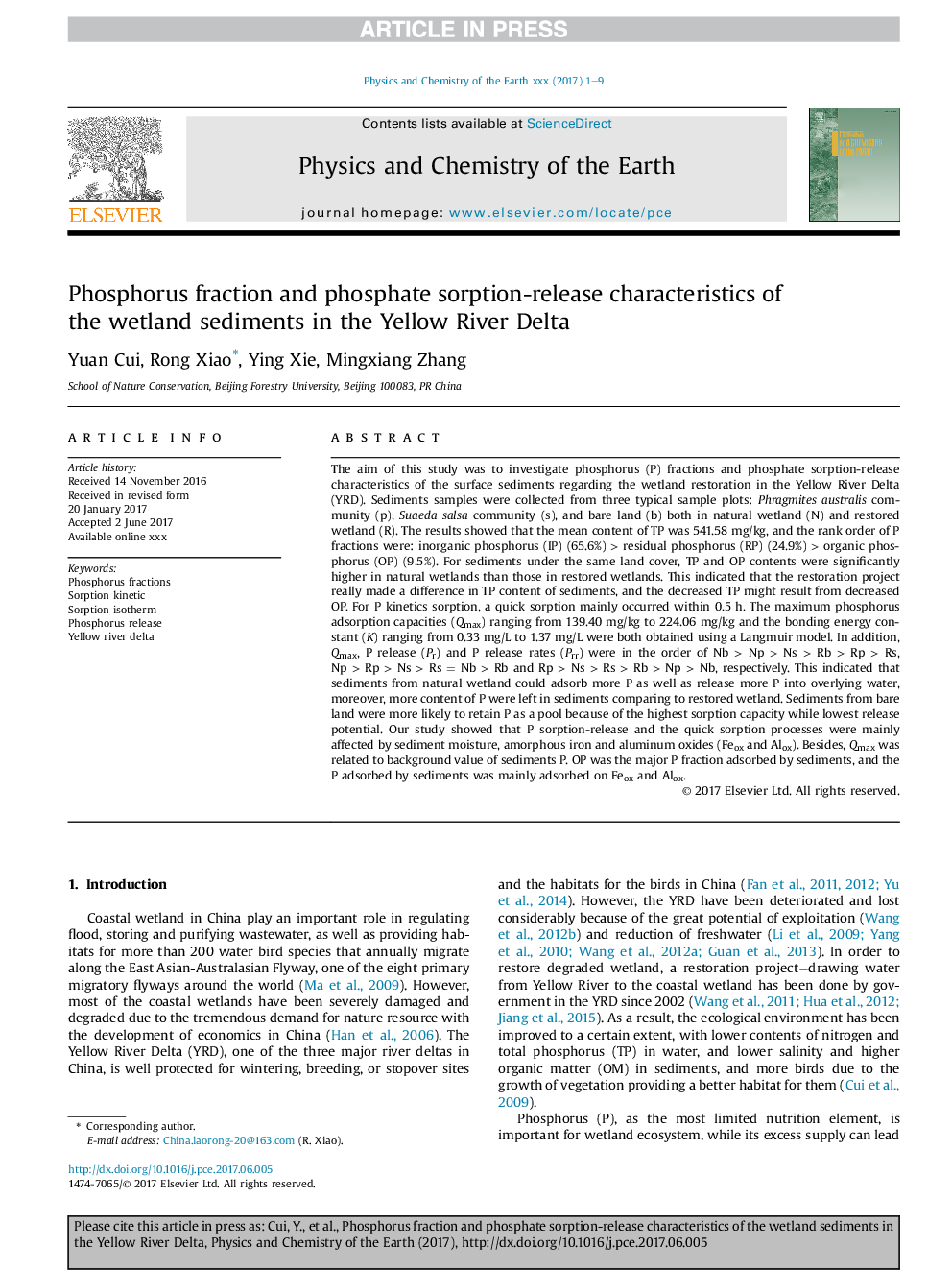| کد مقاله | کد نشریه | سال انتشار | مقاله انگلیسی | نسخه تمام متن |
|---|---|---|---|---|
| 8912392 | 1639335 | 2018 | 9 صفحه PDF | دانلود رایگان |
عنوان انگلیسی مقاله ISI
Phosphorus fraction and phosphate sorption-release characteristics of the wetland sediments in the Yellow River Delta
ترجمه فارسی عنوان
ویژگی های جذب فسفر و جذب فسفات رسوبات تالاب در دلتا رودخانه ی زرد
دانلود مقاله + سفارش ترجمه
دانلود مقاله ISI انگلیسی
رایگان برای ایرانیان
کلمات کلیدی
کسر فسفر، جنبشی جذب، ایزوترم جذب، انتشار فسفر، دلتای رودخانه زرد،
موضوعات مرتبط
مهندسی و علوم پایه
علوم زمین و سیارات
ژئوشیمی و پترولوژی
چکیده انگلیسی
The aim of this study was to investigate phosphorus (P) fractions and phosphate sorption-release characteristics of the surface sediments regarding the wetland restoration in the Yellow River Delta (YRD). Sediments samples were collected from three typical sample plots: Phragmites australis community (p), Suaeda salsa community (s), and bare land (b) both in natural wetland (N) and restored wetland (R). The results showed that the mean content of TP was 541.58 mg/kg, and the rank order of P fractions were: inorganic phosphorus (IP) (65.6%) > residual phosphorus (RP) (24.9%) > organic phosphorus (OP) (9.5%). For sediments under the same land cover, TP and OP contents were significantly higher in natural wetlands than those in restored wetlands. This indicated that the restoration project really made a difference in TP content of sediments, and the decreased TP might result from decreased OP. For P kinetics sorption, a quick sorption mainly occurred within 0.5 h. The maximum phosphorus adsorption capacities (Qmax) ranging from 139.40 mg/kg to 224.06 mg/kg and the bonding energy constant (K) ranging from 0.33 mg/L to 1.37 mg/L were both obtained using a Langmuir model. In addition, Qmax, P release (Pr) and P release rates (Prr) were in the order of Nb > Np > Ns > Rb > Rp > Rs, Np > Rp > Ns > Rs = Nb > Rb and Rp > Ns > Rs > Rb > Np > Nb, respectively. This indicated that sediments from natural wetland could adsorb more P as well as release more P into overlying water, moreover, more content of P were left in sediments comparing to restored wetland. Sediments from bare land were more likely to retain P as a pool because of the highest sorption capacity while lowest release potential. Our study showed that P sorption-release and the quick sorption processes were mainly affected by sediment moisture, amorphous iron and aluminum oxides (Feox and Alox). Besides, Qmax was related to background value of sediments P. OP was the major P fraction adsorbed by sediments, and the P adsorbed by sediments was mainly adsorbed on Feox and Alox.
ناشر
Database: Elsevier - ScienceDirect (ساینس دایرکت)
Journal: Physics and Chemistry of the Earth, Parts A/B/C - Volume 103, February 2018, Pages 19-27
Journal: Physics and Chemistry of the Earth, Parts A/B/C - Volume 103, February 2018, Pages 19-27
نویسندگان
Yuan Cui, Rong Xiao, Ying Xie, Mingxiang Zhang,
